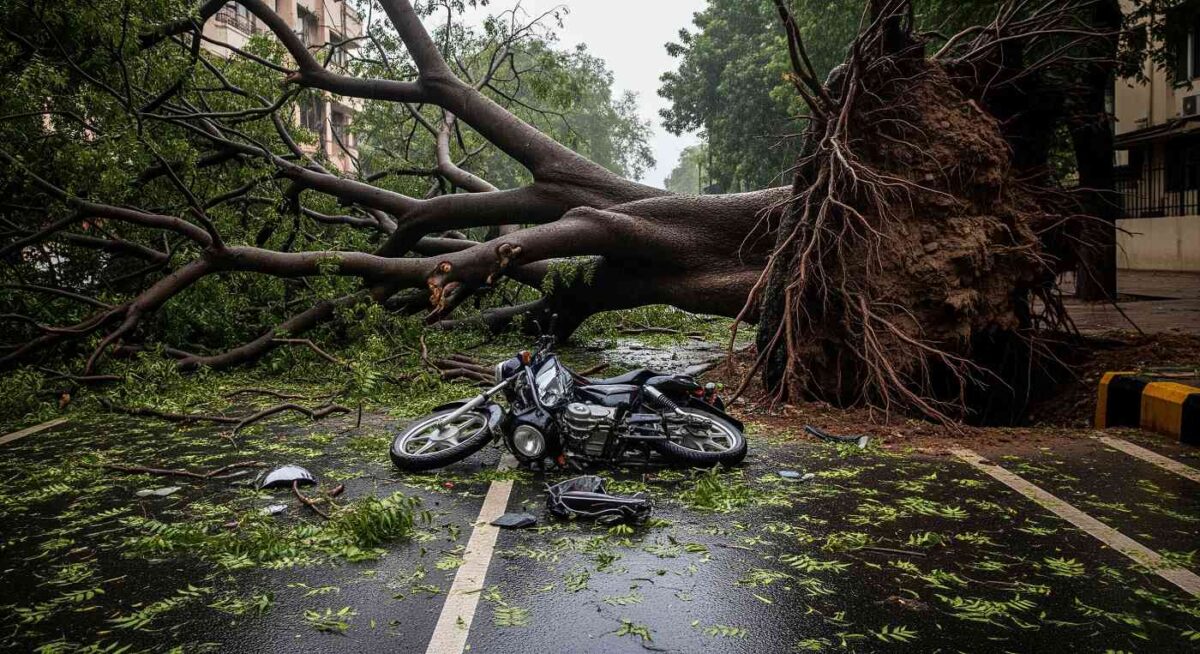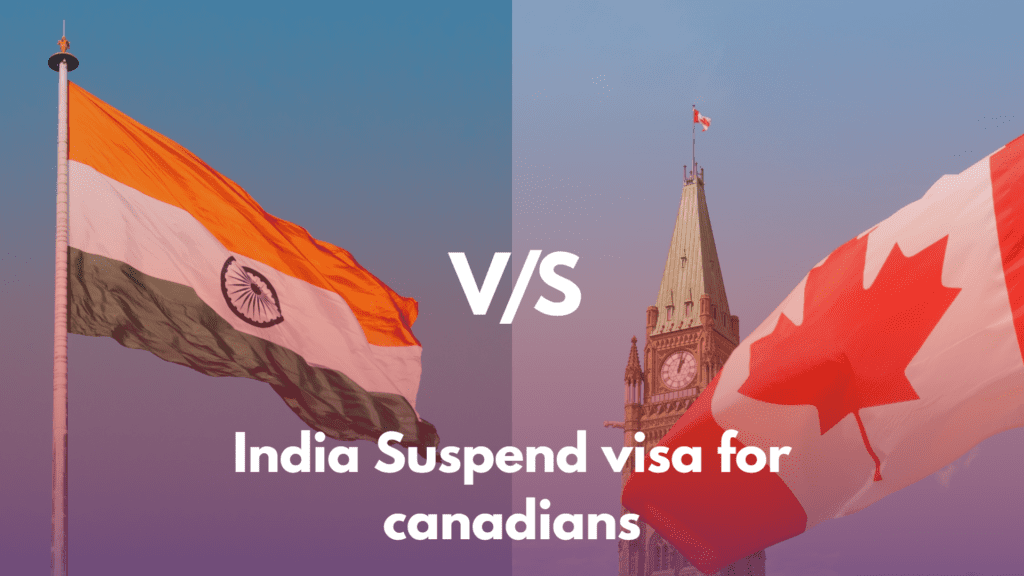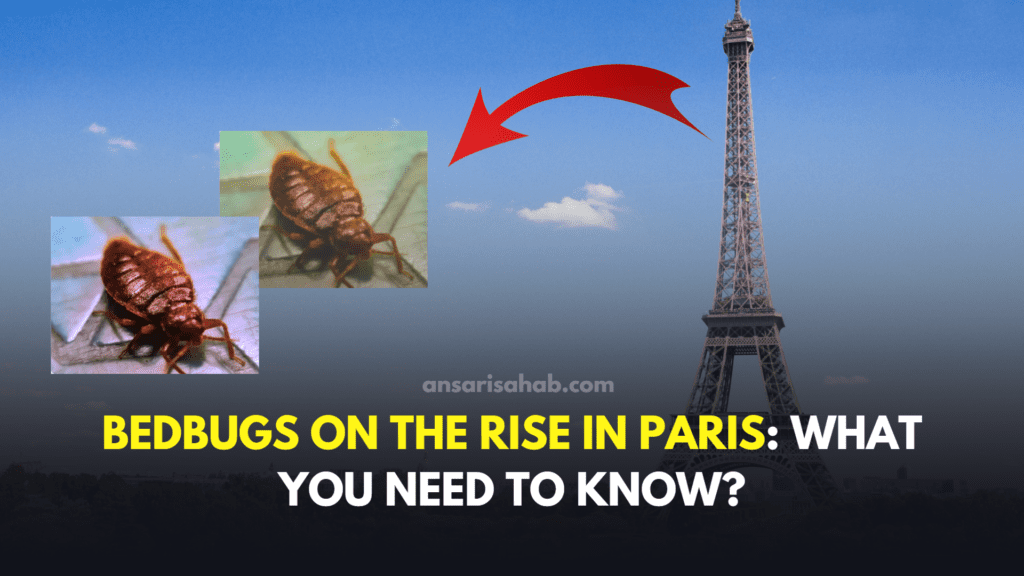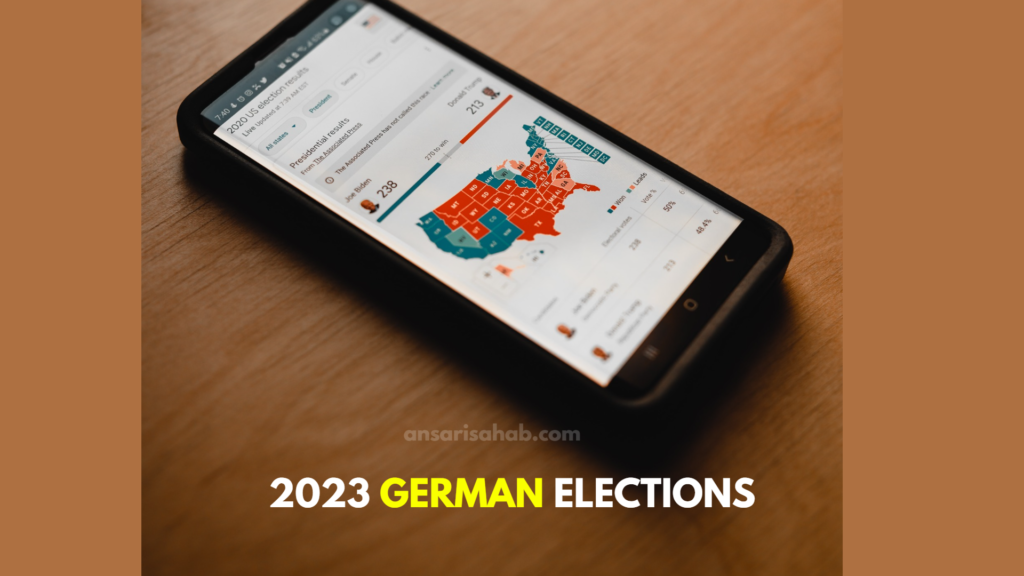On the rainy morning of Thursday, August 14, 2025, a tragic Delhi tree fall near Paras Chowk, B-Block, Kalkaji left a family shattered: a 50-year-old father, Sudhir Kumar, lost his life and his 22-year-old daughter, Priya, was seriously injured when an old neem tree suddenly uprooted and crashed onto their motorcycle amid heavy rainfall.
What Happened: Minute-by-Minute
- ~9:50–10:00 AM IST — An old roadside neem tree abruptly uprooted near HDFC Bank at Paras Chowk in Kalkaji and fell onto moving traffic. The motorcycle carrying Sudhir Kumar and Priya was crushed, and nearby parked vehicles were damaged.
- Immediately after — Local residents and passersby rushed in with umbrellas to help, calling the police and fire services as intense rain hampered rescue efforts. Video footage from nearby cameras and phones captured the chaos.
- Rescue & Hospitalization — The duo were extracted and rushed to a trauma centre. Sudhir Kumar was declared dead during treatment, while Priya sustained serious injuries, including a pelvic fracture reported by doctors.
- Citywide Impact — The same spell of rain caused waterlogging, traffic snarls, and additional tree/wall collapses across Delhi, intensifying scrutiny over monsoon preparedness.
Where It Happened
The incident site is Paras Chowk (B-Block, Kalkaji) in Southeast Delhi, directly adjacent to an HDFC Bank branch. The tree stood inches from the footpath along a busy neighborhood road, amplifying risk for both riders and parked vehicles during downpours.
Who Were the Victims
- Sudhir Kumar (50) — commuting with his daughter on a motorcycle; succumbed to injuries.
- Priya (22) — hospitalized with serious injuries; a pelvic fracture was reported.
Family members, neighbors, and bystanders described harrowing scenes as rescuers worked in heavy rain to free the trapped duo.
Why It Turned Deadly
Preliminary indicators point to a combination of factors:
- Soaked, loosened soil from sustained rain likely weakened roots, making the old tree vulnerable to collapse.
- The tree’s age/condition and proximity to the carriageway increased the chance of a direct hit on commuters.
- Peak-hour traffic and reduced visibility in heavy rain complicated both impact and rescue.
Accountability & Preventive Measures
The incident has reignited debate over:
- Periodic risk audits for old/leaning trees along busy stretches, schools, markets, and hospitals.
- Pre-monsoon pruning and removal of severely compromised trees after arborist assessment.
- Clear inter-agency SOPs (civic bodies, PWD, police, fire) for rapid response and traffic management when trees fall.
- Public reporting channels so residents can flag dangerous trees and track action taken.
Safety Tips for Commuters During Storms
- Avoid riding/parking under large or aging trees during or right after heavy rain.
- Slow down near tree-lined corridors; leave extra braking distance.
- Scan verges for tilted trunks, exposed roots, or sagging canopies.
- Use helmets and riding gear; visibility and impact protection matter in sudden events.
- Check live advisories on waterlogging and closures before stepping out.
Looking Ahead
As extreme rainfall events become more frequent, cities must pair monsoon readiness with urban tree safety: proactive inspections, data-backed pruning/removal, and rapid on-ground coordination. The Kalkaji tragedy is a solemn reminder that robust planning can save lives—and that safe, well-managed urban greenery remains essential to a resilient Delhi.









